This article reviews the history of digital computation, and investigates just how far the concept of computation can be taken. In particular, I address the question of whether the universe itself is in fact a giant computer, and if so, just what kind of computer it is. I will show that the universe can be regarded as a giant quantum computer. The quantum computational model of the universe explains a variety of observed phenomena not encompassed by the ordinary laws of physics. In particular, the model shows that the quantum computational universe automatically gives rise to a mix of randomness and order, and to both simple and complex systems.
Category: quantum physics
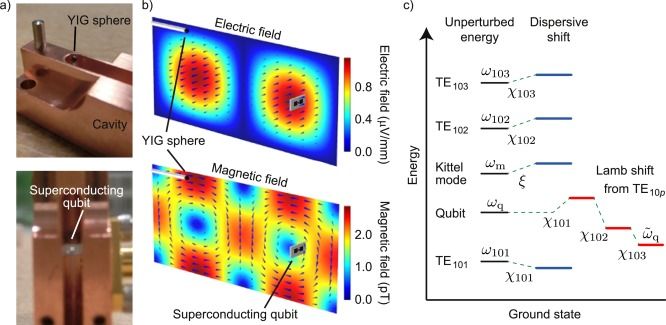
Quantum magnonics: The magnon meets the superconducting qubit
O,.o circa 2016.
Nous appliquons les techniques de l’optique quantique micro-onde aux excitations collectives des spins d’une sphère macroscopique d’un isolant ferromagnétique. Nous mettons en évidence, dans la limite d’une unique excitation magnonique, le couplage fort entre un mode magnétostatique de la sphère et un mode d’une cavité micro-onde. En outre, nous avons ajouté un bit quantique supraconducteur à la cavité, ce qui permet de coupler ce bit quantique au mode de magnon, via l’échange virtuel d’un photon. Nous observons ainsi un anticroisement des fréquences de résonance du magnon et de la cavité. Cette plateforme hybride permet la création et la caratérisation d’états non classiques de magnons.
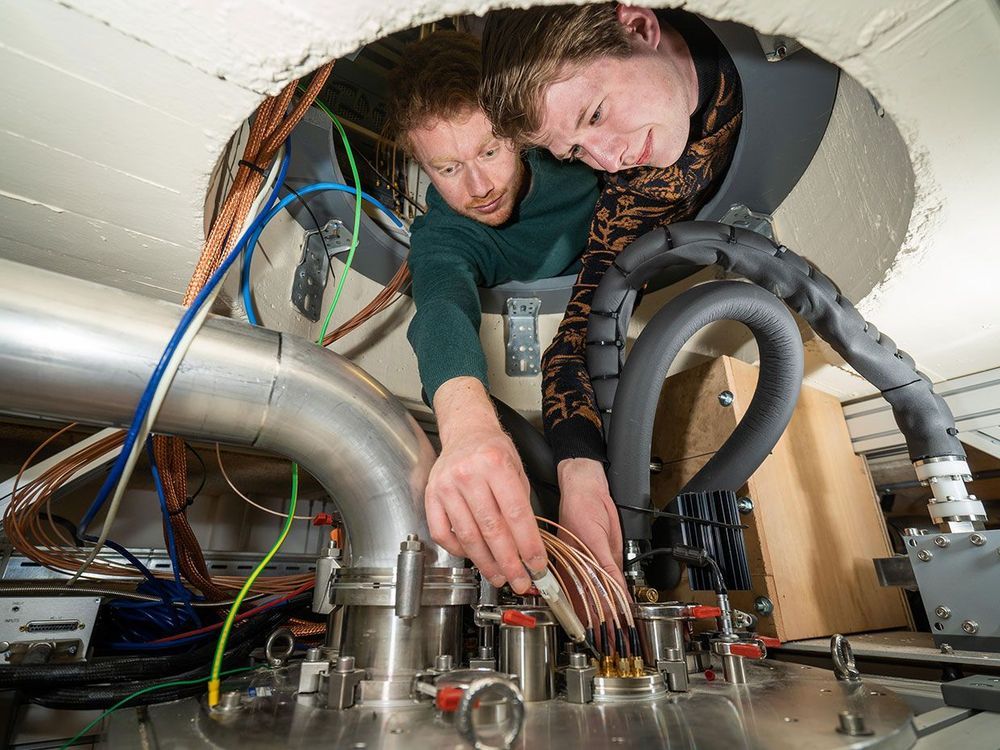
Quantum Computing Milestone: Researchers Compute With ‘Hot’ Silicon Qubits
Two research groups say they’ve independently built quantum devices that can operate at temperatures above 1 Kelvin—15 times hotter than rival technologies can withstand.
The ability to work at higher temperatures is key to scaling up to the many qubits thought to be required for future commercial-grade quantum computers.
A team led by Andrew Dzurak and Henry Yang from the University of New South Wales in Australia performed a single-qubit operation on a quantum processor at 1.5 Kelvin. Separately, a team led by Menno Veldhorst of Delft University of Technology performed a two-qubit operation at 1.1 Kelvin. Jim Clarke, director of quantum hardware at Intel, is a co-author on the Delft paper. Both groups published descriptions of their devices today in Nature.
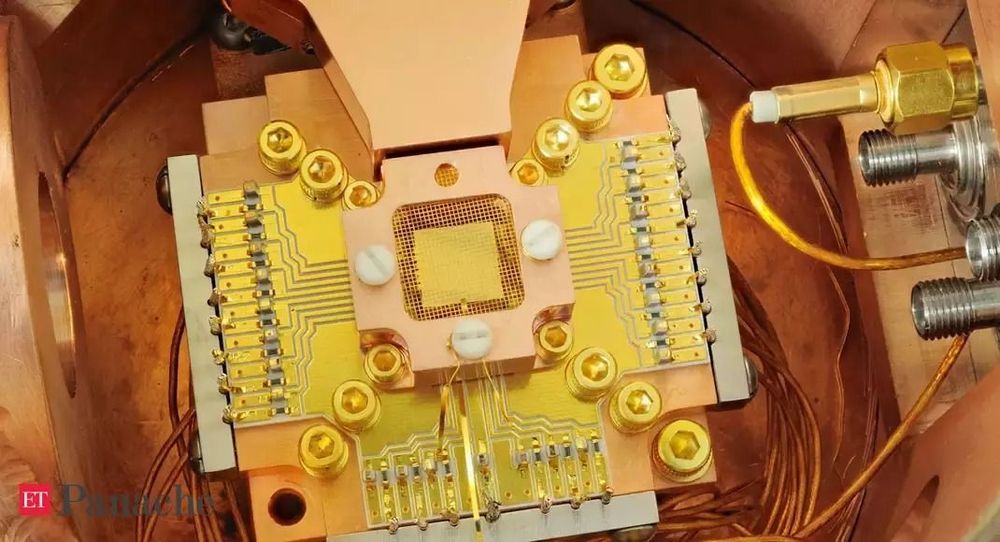
One step closer to commercialisation: Intel’s big breakthrough will allow quantum computers to work at warm temperatures
Modern circuitry operates in binaries – switches can either be 0 or 1 – which in turn restricts their computing power to discrete values. Qubits, on the other hand, can hold both values depending on their state, and derives this property from quantum physics. Qubits are modelled on subatomic particles like electrons, giving them an edge over Boolean systems. Quantum computers are difficult to operate, in part due its bulk, power consumption, hardware complexity, and reliance on low temperatures.
Intel’s “hot” qubit technology ought to address the latter concern. These qubits are capable of operating at temperatures higher than 1 Kelvin (−458F / −273K), which is the warmest temperature that quantum computers till now were able to tolerate. Computers in outer space operate at 3 Kelvin. The practical benefits of this breakthrough will manifest itself if Intel can combine quantum hardware and control circuitry on the same chip. It has hitherto been difficult for researchers to separate control electronics for qubits from the qubits themselves owing to the frigid temperature that the latter require to function.
Intel will be hoping that this development will help it fabricate more efficient chips that meld the two parts on the same chip without compromising on fidelity. The commercialization of quantum computing still remains a pipe dream, but large corporations like Google and Intel are paving the way for improvements that could make quantum computers more viable. Even so, make sure you’re wearing a scarf before you go to collect your first quantum computer.

Boson particles discovery provides insights for quantum computing
Scientists found that a class of particles known as bosons can behave as an opposite class of particles called fermions, when forced into a line.
The research, conducted at Penn State University and funded in part by the Army Research Office, an element of U.S. Army Combat Capabilities Development Command’s Army Research Laboratory, found that when the internal interactions among bosons in a one-dimensional gas are very strong, their velocity distribution transforms into that of a gas of non-interacting fermions when they expand in one dimension. The research is published in the journal Science.
“The performance of atomic clocks, quantum computers and quantum systems rely upon the proper curation of the properties of the chosen system,” said Dr. Paul Baker, program manager, atomic and molecular physics at ARO. “This research effort demonstrates that the system statistics can be altered by properly constraining the dimensions of the system. In addition to furthering our understanding of foundational principles, this discovery could provide a method for dynamically switching a system from bosonic to fermionic to best meet the military need.”
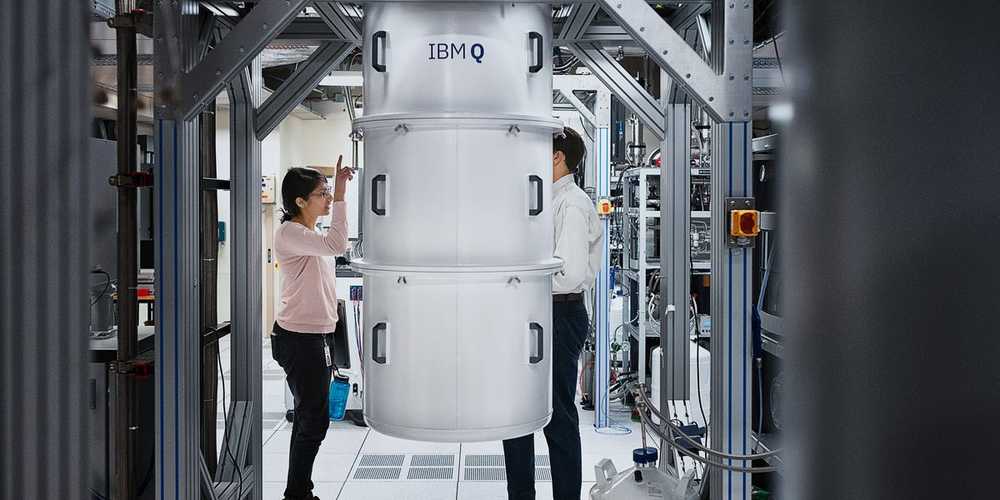
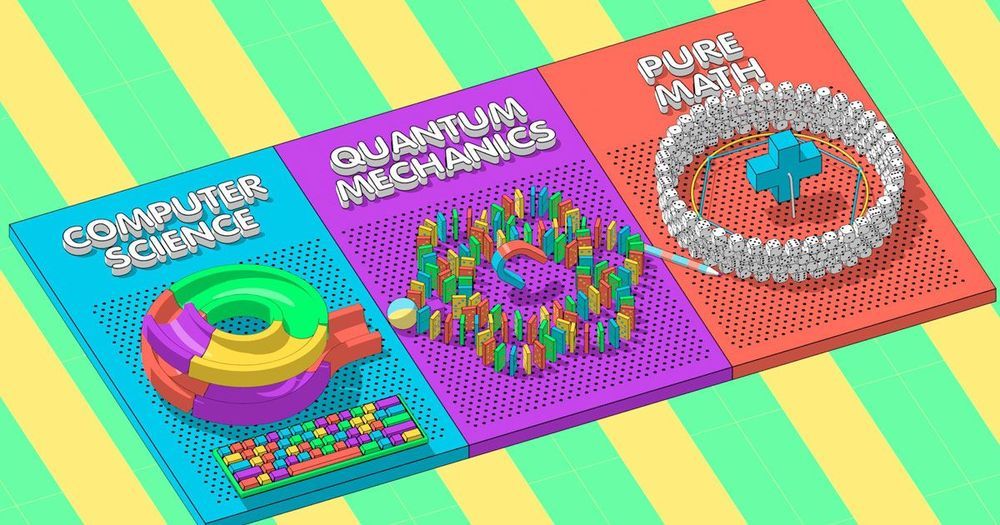
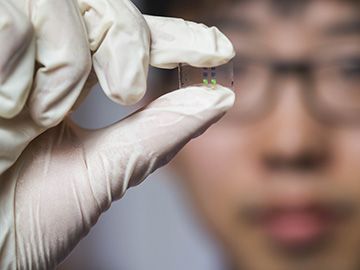
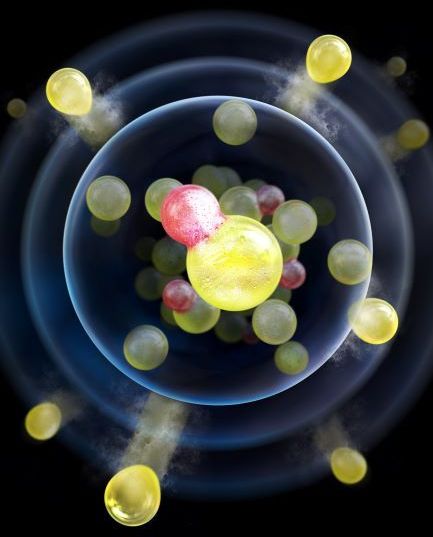
Physicists close in on a simpler route to quantum degenerate molecules
Cooling atoms to ultracold temperatures is a routine task in atomic physics labs, but molecules are a trickier proposition. Researchers in the US have now used a widely-applicable combination of methods to make molecules colder than ever before – a feat that could pave the way for applications in areas as diverse as high-temperature superconductivity and quantum computing.
In everyday life, we do not see the bizarre effects of quantum mechanics because the quantum states of the particles around us are constantly collapsing, or decohering, as they interact. At temperatures near absolute zero, however, some identical particles will simultaneously occupy the lowest energy quantum state available. This phenomenon is known as quantum degeneracy, and it was experimentally demonstrated in 1995, when groups led by Eric Cornell and Carl Wieman (then at the University of Colorado, Boulder) and Wolfgang Ketterle of the Massachusetts Institute of Technology (MIT) created the first Bose-Einstein condensates (BECs) with rubidium and sodium atoms, respectively.
Other groups have subsequently made condensates using other atomic species, and various techniques have been developed to cool atoms to quantum degeneracy. In one of the simplest methods, a sample of atoms is confined in a magnetic or optical trap. Hotter atoms with more kinetic energy are more readily able to escape, or evaporate, from this trap, so the remaining atoms become cooler. In another method, known as sympathetic cooling, one type of atom is cooled directly and allowed to thermalize with atoms of another type, thereby cooling them by extracting their kinetic energy.
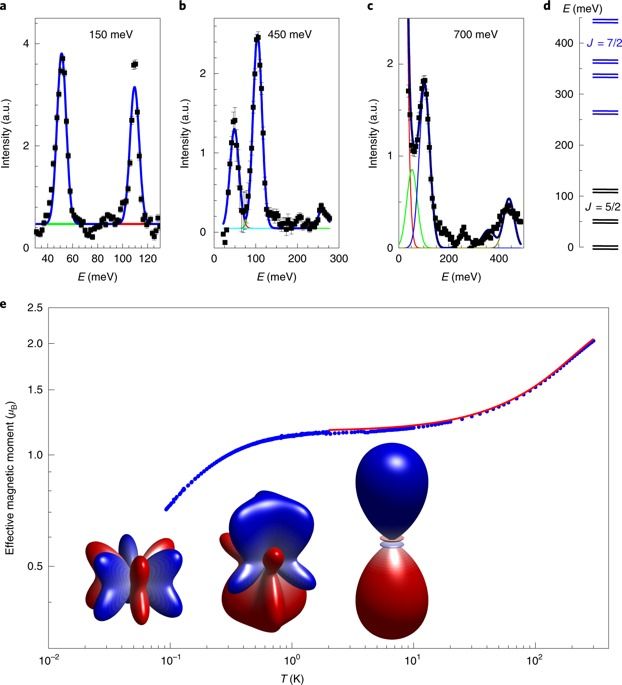
A quantum liquid of magnetic octupoles on the pyrochlore lattice
O,.o maybe this could make computronium.
Spin liquids are highly correlated yet disordered states formed by the entanglement of magnetic dipoles1. Theories define such states using gauge fields and deconfined quasiparticle excitations that emerge from a local constraint governing the ground state of a frustrated magnet. For example, the ‘2-in–2-out’ ice rule for dipole moments on a tetrahedron can lead to a quantum spin ice2,3,4 in rare-earth pyrochlores. However, f-electron ions often carry multipole degrees of freedom of higher rank than dipoles, leading to intriguing behaviours and ‘hidden’ orders5,6. Here we show that the correlated ground state of a Ce3+-based pyrochlore, Ce2Sn2O7, is a quantum liquid of magnetic octupoles. Our neutron scattering results are consistent with a fluid-like state where degrees of freedom have a more complex magnetization density than that of magnetic dipoles. The nature and strength of the octupole–octupole couplings, together with the existence of a continuum of excitations attributed to spinons, provides further evidence for a quantum ice of octupoles governed by a ‘2-plus–2-minus’ rule7,8. Our work identifies Ce2Sn2O7 as a unique example of frustrated multipoles forming a ‘hidden’ topological order, thus generalizing observations on quantum spin liquids to multipolar phases that can support novel types of emergent fields and excitations.